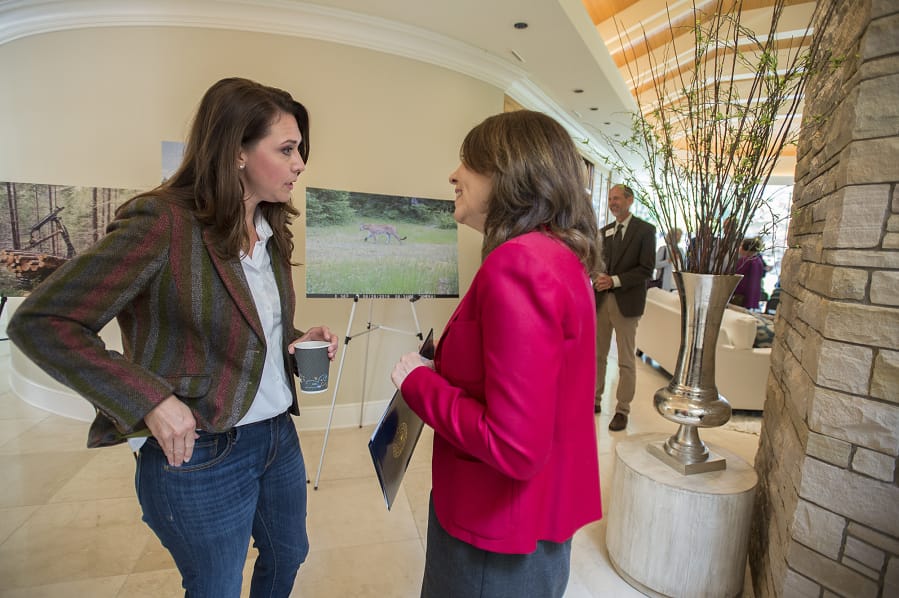Washington’s congressional delegates, land management agency officials and local political leaders celebrated the Columbia Land Trust’s decade of work to conserve 20,000 acres of forestland near Mount St. Helens.
Several speakers at Monday’s event described the Mount St. Helens Forest Conservation project as an example of successful collaboration by different groups around a large and challenging goal.
“This is a positive example to the rest of the country — quite frankly, a tremendous example,” Rep. Jaime Herrera Beutler, R-Battle Ground, said.
When housing developments cropped up and threatened to erupt on the south side of Mount St. Helens National Volcanic Monument, the land trust, Pope Resources and Skamania County worked out an agreement to put 85 percent of Pope’s holdings into conservation and leave 15 percent for recreational development.
Columbia Land Trust Executive Director Glenn Lamb said the project signifies a shift in how the organization handles conservation work. The land trust plans to work collectively with other organizations on future projects, rather than going it alone.
“We want to foster a culture of stewardship,” he said.
Leaders from the three organizations came together as tensions neared a fever pitch during the mid-2000s when real estate developers took advantage of Skamania County’s lack of zoning regulations near the volcano.
Property speculators had carte blanche to slice more than 34,000 acres of private timberland into small developable lots. That made state and county officials, federal agencies, and recreation groups, among others, panic about the prospect of hundreds, perhaps thousands of homes built in isolated and sensitive habitat areas, and requiring a host of new and expensive services.
Amid the acrimony, Skamania County issued a moratorium and rezoned the area to reduce housing density. Pope, the area’s largest landowner, threatened to sue. Just before the new rules went into effect in 2006, the company subdivided its 24,000 acres into 1,200, 20-acre development lots.
When the land trust stepped in, it worked with Pope and Skamania County to strike the deal.
“The crisis, for us, was of monumental proportion: 20,000 acres losing all of its zoning … but that crisis really was the fuel that brought together three disparate groups,” said Jon Rose, vice president of Pope’s real estate division. “The real story here is three committed players that did not waste a crisis, that got over their preconceived notions — both expressed and not always expressed — about the role of the other two. We all pulled together, put our differences aside, and every one of the three moved in terms of their ideology.”
The project was paid for with nearly $6 million in Forest Legacy Program grants, which preserves working timberlands, about $6 million in Cooperative Endangered Species Program funds, and $1.25 million in Washington Wildlife and Recreation Program grants.
Sen. Maria Cantwell, D-Wash., also used the event to discuss her work to get the Land and Water Conservation Fund — which expires at the end of this month — reauthorized.
“If there is a project in the nation that speaks to how important the Land and Water Conservation Fund is, it is this project here in Skamania County that highlights the recreation and preservation of so much of a unique part of our state so that all can enjoy our public lands.”




